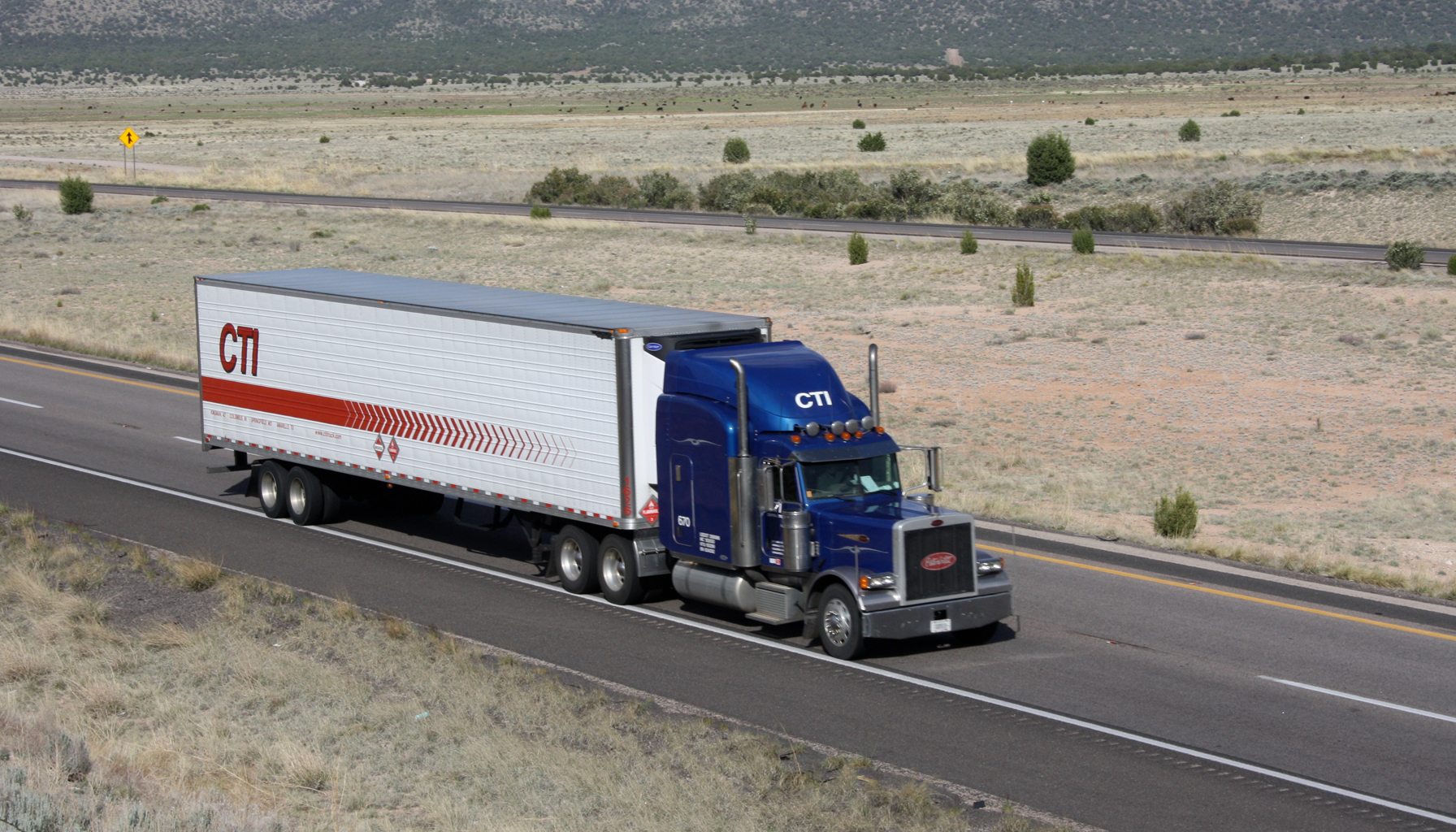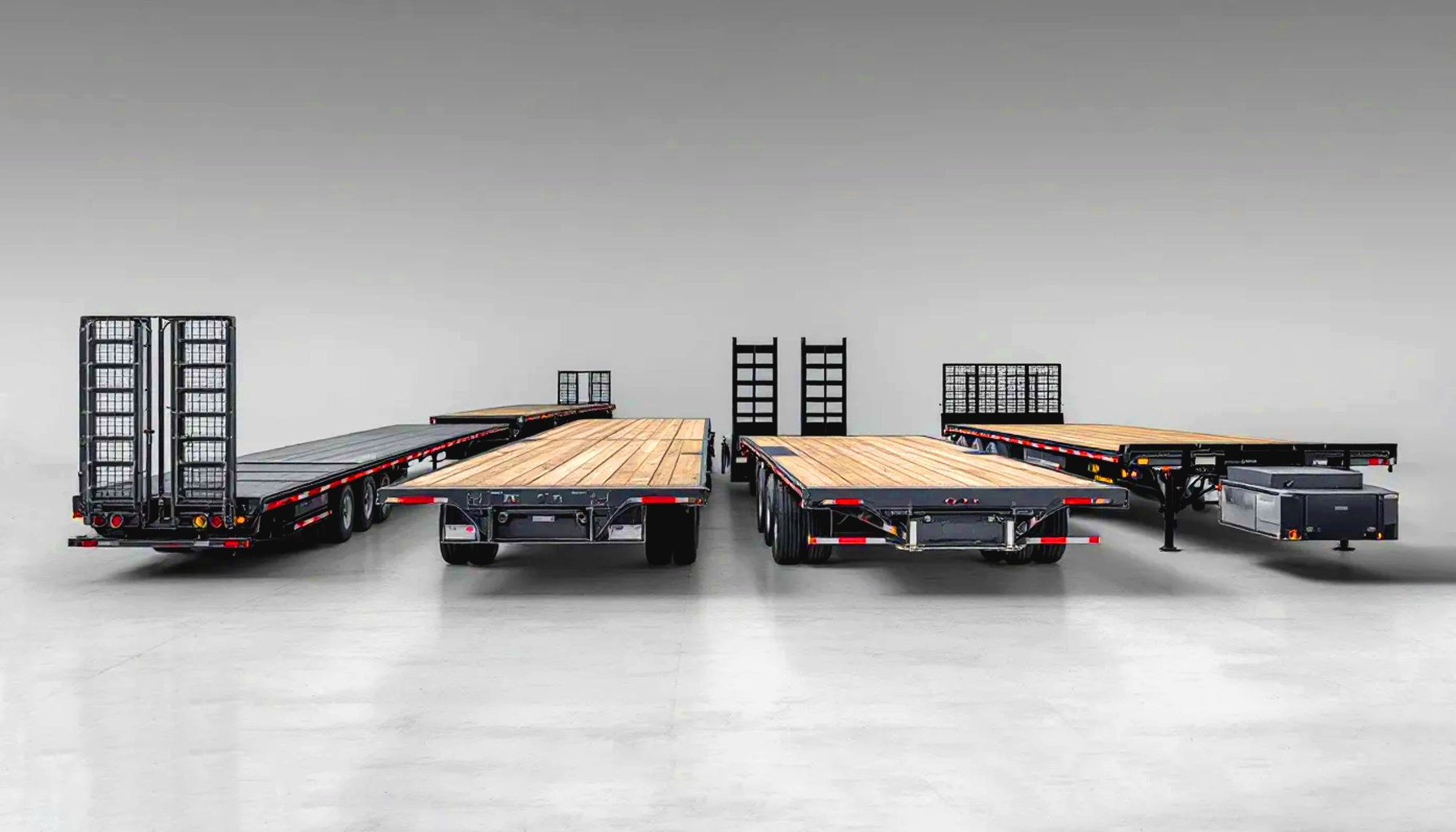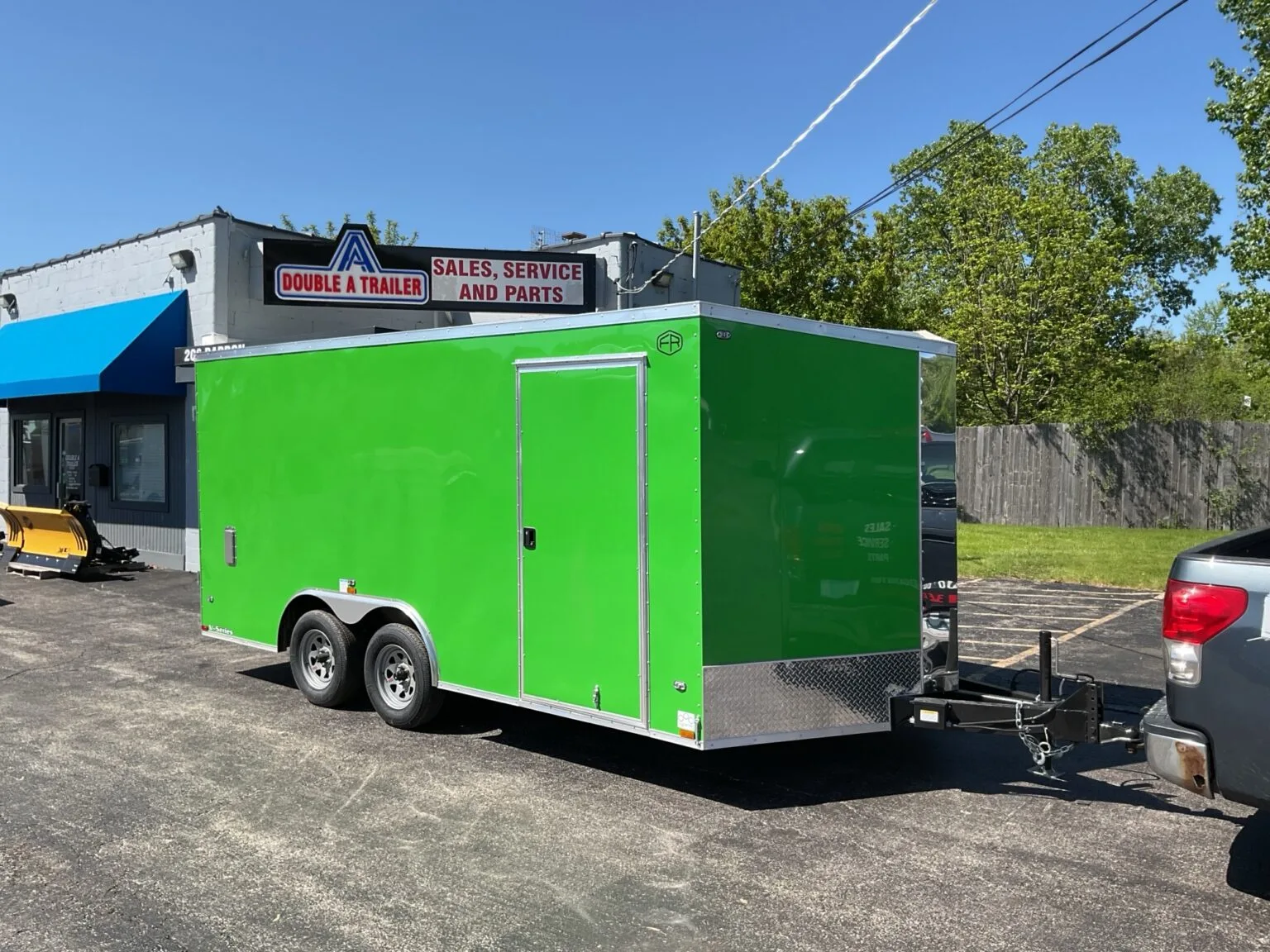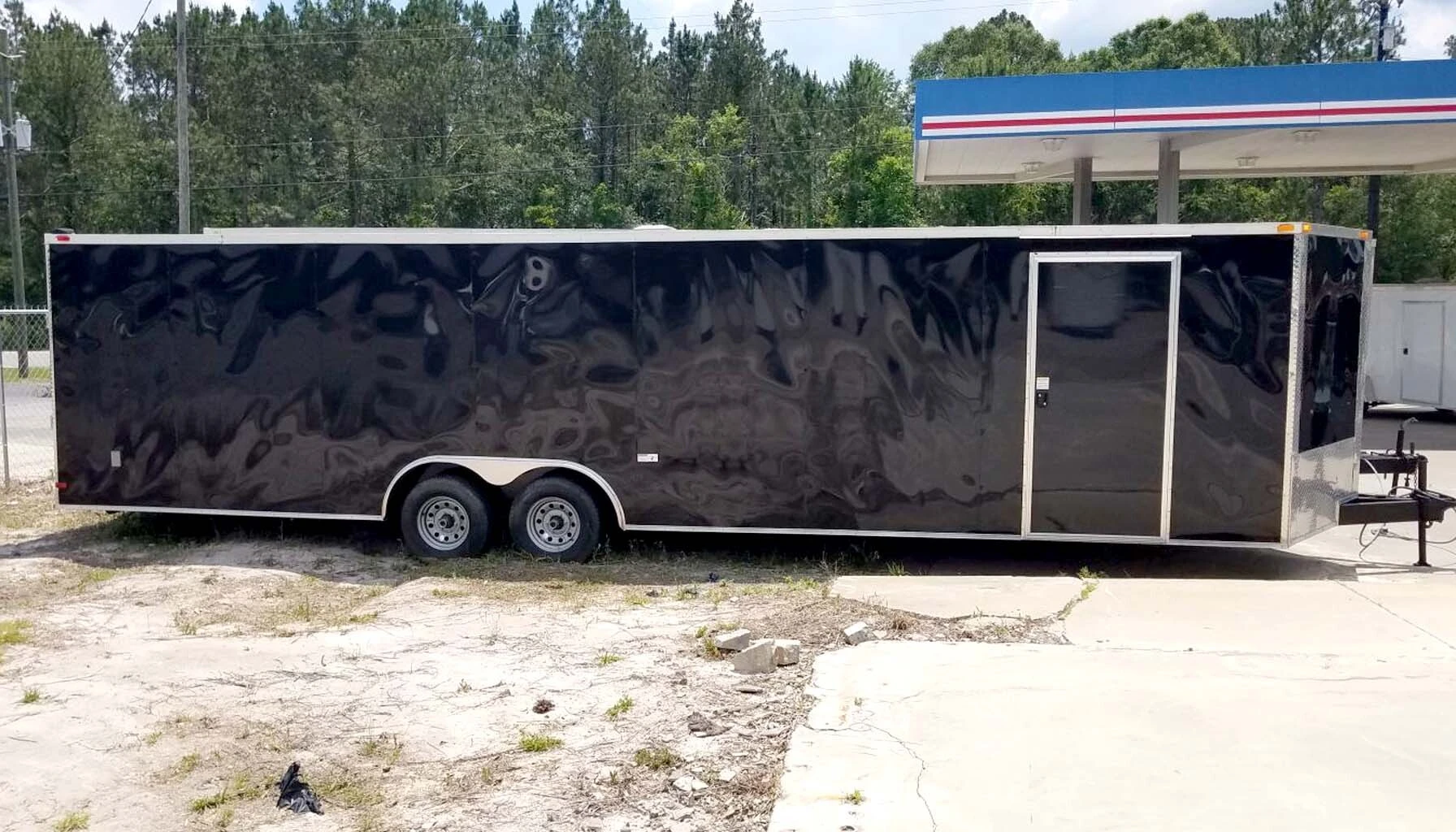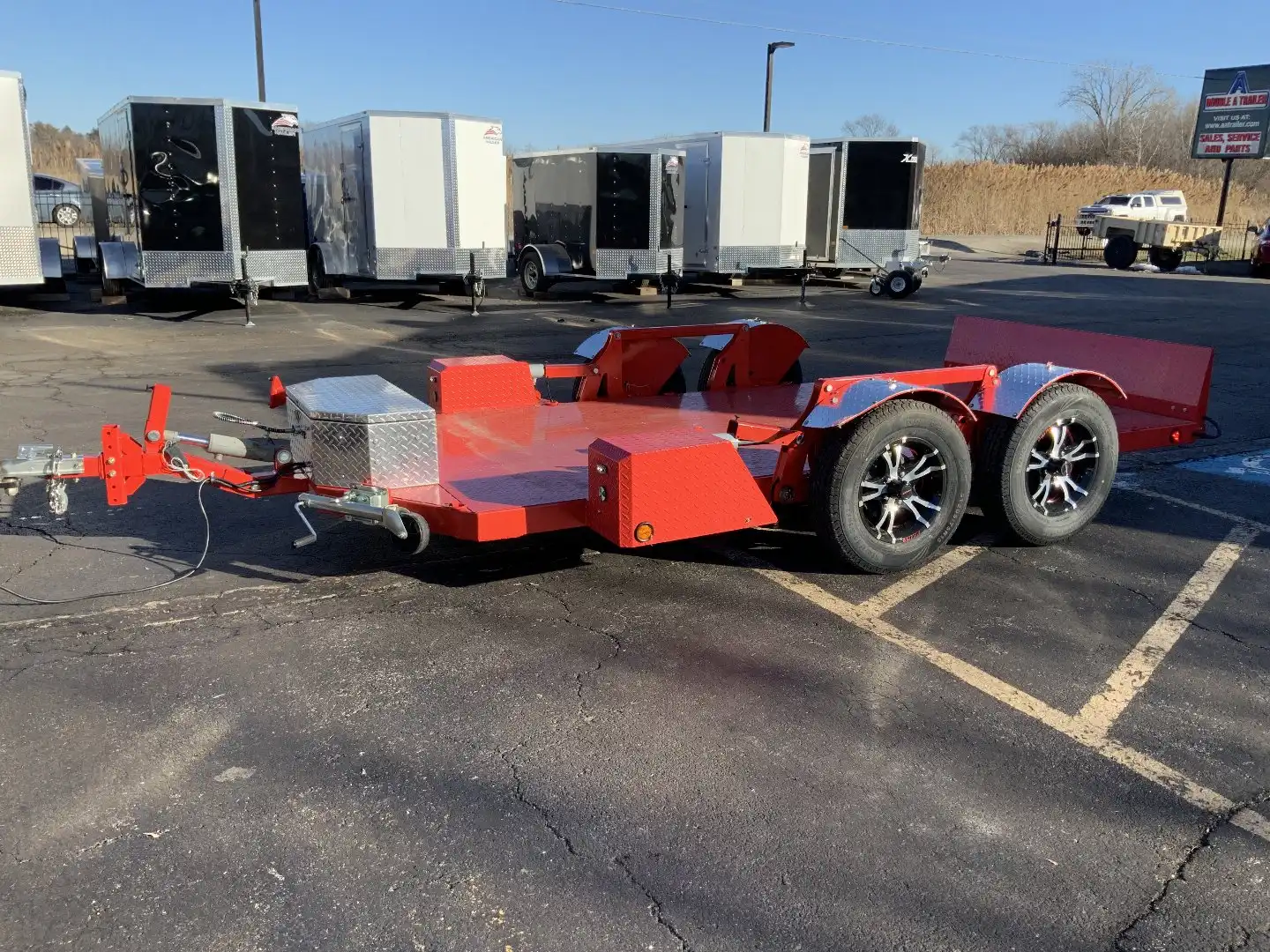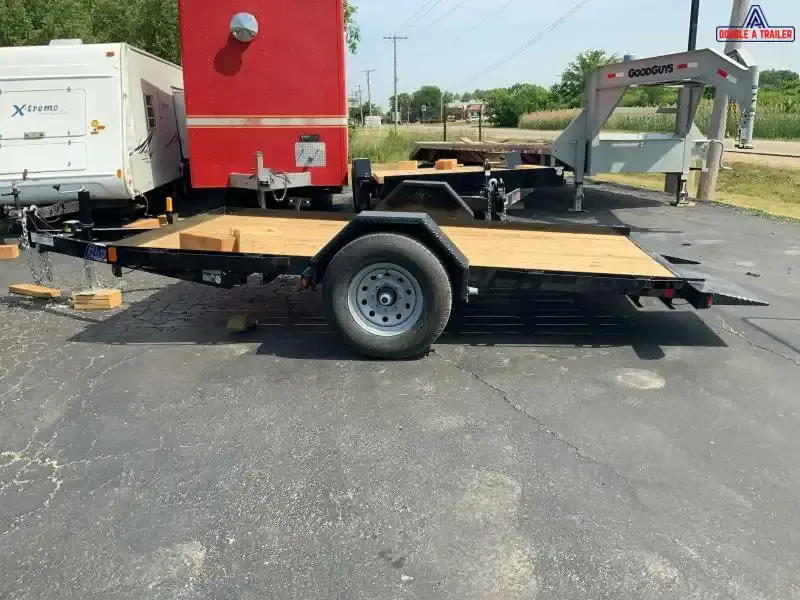If you work in the logistics industry, it is essential to understand what semi-truck trailers are, how they operate, and their dimensions for various hauling needs.
In this blog, we will discuss everything about Semi trucks, including their length, dimensions, weight, and how to choose the one that is right for your hauling needs.
Define Semi Truck Trailers
There is a tractor and a trailer. The cab of the tractor is where the driver sits, and the trailer is where the goods are stored. It’s the size of both the tractor and the trailer.
How long are semi-truck trailers for sale?
To determine the size of a semi truck and trailer combo, you must know the maximum length of the semi truck and trailer. Truck trailer size laws vary by location to keep drivers safe. Let’s examine the longest semi truck and trailer length and legal truck trailer specifications.
Remember that these standards maintain roads safe, stable, and easy to drive on. For safe and efficient transportation, follow these regulations regarding truck and trailer sizes.
The legal truck trailer size
Each US state has various truck trailer size requirements. There may be some minor changes, but the rules are similar nationwide.
Most places limit semi truck length with a 53′ trailer. Depending on the trailer and authorization, certain jurisdictions permit trailers to be 57 or 59 feet in length.
This list shows average legal semi-truck trailer dimensions so you can get a full picture:
- The 53-foot dry van is the longest trailer type for semi trucks.
- Flatbed Semi Truck: 48-53 ft
- Semi Truck Tanker 48-53 feet Refrigerated Semi Truck 48-53 feet
These semi-truck trailer sizes fit most business tractor-trailer combinations. Remember that specialty trailers, such as those used for transporting heavy items, may have length restrictions and require additional licenses.
Anyone in transportation, including logistics companies, truck drivers, and others, must be familiar with the lengths of semi-trucks and trailers. Following appropriate truck trailer sizes will help us maintain roads safely and legally, benefiting the industry and its communities.
Weight of Semi Truck Trailers
We discussed the length of a semi lorry; however, what about its weight? This may prompt you to inquire, “What is the weight of a semi truck?” It is very important to know both the Trailer weight and length.
Multiple responses are possible because the weight of the vehicle depends on whether it is fully loaded or not.
The unladen weight refers to the combined weight of the tractor and trailer when the wagon is empty.
The laden weight is the total weight of the tractor and trailer when the trailer is full.
“Gross vehicle weight rating” is what GVWR stands for. This is the total weight of the truck and its load. This will assist us in determining the Standard truck trailer dimensions, such as weight and driving force.
Different Types and Sizes of Trailers
Tractor-trailers are often utilized to meet a variety of transportation demands. These flexible vehicles are made to pull a variety of trailers, each with its size and features. In this section, we’ll examine the various types of trailers commonly used with tractor-trailers and discuss their dimensions. We will also discuss the rules and the Maximum trailer length in the USA that help determine the right size for tractor-trailers.
Types of Trailers That Are Common
Tractor-trailers can hold a wide range of trailer kinds, each designed for a specific type of cargo. Some common types of trailers are:
- Refrigerated Trailers
- Flatbed Trailers
- Dry Van Trailers
- Lowboy Trailers
- Tanker Trailers
- Trailers for intermodal use
These sorts of trailers come in varied shapes and sizes to meet different transportation needs.
Dry Vans
The semi-truck trailer size of every trailer can vary based on factors such as the amount of cargo it can hold, industry regulations, and special design characteristics. These sizes fit a multitude of various kinds of trucks:
For dry vans, there are numerous types. Most people prefer those that are 53 feet long, 13.5 feet high, and 8.5 feet wide. You can move and keep a lot of things with these sizes.
Reefer Trailers
Reefer trailers are trailers that have been cooled to a specific temperature. The reefer trailer size is the same as that of empty trailers. It needs to be 53 feet long, 8.5 feet broad, and 13.5 feet high. They can carry objects that need to be kept cold, as they have built-in cooling systems.
Flatbed Trailers
These are known as flatbed trailers. The size and shape of the things they carry depend on how much they have. The average length of flatbed trailers is 48 feet long and 8.2 to 8.5 feet wide. It is easy to load and unload enormous or oddly shaped goods because there are no tops or walls.
Tanker Trucks
Tanker trucks can transport both gases and liquids, including chemicals, food, and fuel. The size of the tanker trailer depends on how much and how long semi truck trailers are for sale. But most of the time, they are 8.5 feet broad and 40 to 53 feet long. Due to their design and shape, tanker trucks are more easily suited for carrying liquids.
Lowboy Trailers
People typically use lowboy trailers to transport large goods, such as machines or equipment. The deck on these trailers is lower, allowing taller goods, such as building tools, to fit within. Lowboy trailers come in a wide range of sizes, but most are between 40 and 53 feet long, 8.5 and 10 feet wide, and 20 and 30 inches high at the deck.
Intermodal Trailers
Vehicles, railroads, and ships can all benefit from these trailers. These long-haul truck dimensions are 53 feet in length, 8.5 feet in width, and 13.5 feet in height, similar to dry van vans. Standard sizes make moving goods between modes of transport straightforward and fit.
Always Follow Your State Rules
According to the stats, the U.S. registered approximately 166.1 million private and commercial trucks in 2021.
Each state has various semi-truck length limits for commercial vehicles. The length of trailers allowed in each state depends on local restrictions.
In Washington state, tractors and semi-trailers over 53 feet or 61 feet cannot be driven. The tractor and trailer must be under 53 feet or 61 feet in length, with a maximum of two trailers.
Luckily, your diesel repair business is likely familiar with local laws. Ask them how to manage your fleet better.
Important Semi Truck Safety Tips
The trailer’s weight and length make driving it intimidating. However, you can follow these rules to avoid accidents with these enormous cars:
Avoid blind areas. These cars have large blind spots, notably to the sides and behind the trailer. The truck driver may not see you if you can’t see their mirrors.
Allow Extra Room: Give extra room when turning, merging, or stopping. Stopping big trucks safely takes more time and distance.
Pass Carefully: Pass a large truck fast and carefully. Avoid hanging around near the truck, especially in blind zones.
Watch for broad turns: Semi-trucks may require additional clearance to make wide turns. Give the truck room to finish.
Conclusion
Semi-truck trailers are a good choice if you need a vehicle trailer that can carry bigger loads. These are large trailers that are attached to the back of a truck to carry items. You can choose from numerous models tailored to your specific needs. When measuring the width, do not include mirrors mounted to the back of the trailer or any other safety equipment built into it.
Get help from Double A Trailers.
Double A Trailers can help you with your semi-trailer demands. From choosing the right semi-trailer to providing safety tips and state guidelines, we are here to support you. Contact us for all your queries and concerns.
Frequently Asked Questions – FAQs
1. How long can a semi truck and trailer be at the most?
Some laws specify the maximum length of time a semi-vehicle and trailer can be combined. Most lengths in the US are between 70 and 80 feet long. However, you should check the rules everywhere, as they may vary.
2. What kind of trailer does an 18-wheeler pull?
The trailer of an 18-wheeler is called a “semi-trailer.” This is what the trailer on the truck’s tractor is called. They need the tractor to support them and provide power because they don’t have a front axle.
3. How much weight can a semi-trailer hold?
A semi-truck can carry between 42,000 and 48,000 pounds of cargo.
